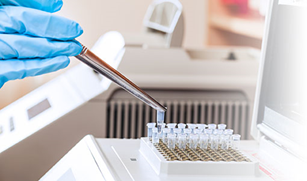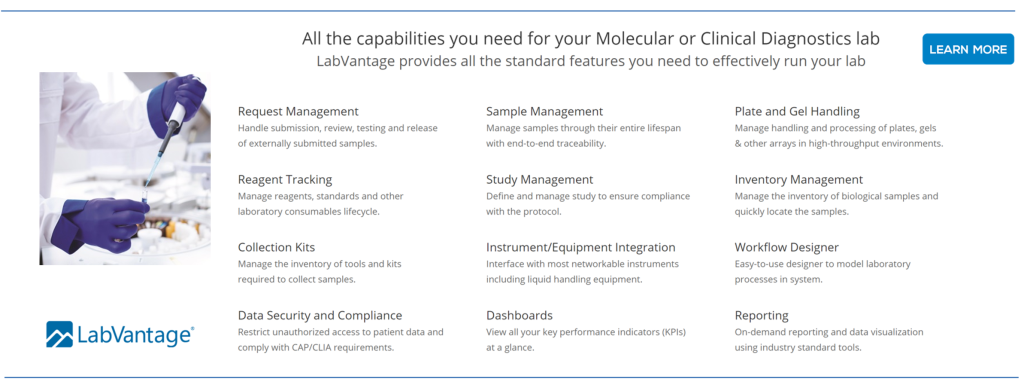 Molecular and clinical diagnostics labs are facing increasingly large sample & data volumes and more complicated challenges surrounding compliance. In addition, there is a critical need for greater system integration and connectivity.
Molecular and clinical diagnostics labs are facing increasingly large sample & data volumes and more complicated challenges surrounding compliance. In addition, there is a critical need for greater system integration and connectivity.
As molecular testing has taken off and diagnostic testing has become the established norm in the healthcare setting, labs are shouldering the burden of growing demand.
Fast Diagnostic Results: A Key Healthcare Driver
Rapid test result turnaround has taken on supreme importance in today’s precision medicine-focused world. In the healthcare setting, clinicians need fast and accurate test results. These timely results impact patient management, diagnosis and treatment – and create better patient outcomes.
Big Data Demands a Big Solution
The single biggest challenge of today’s clinical or molecular diagnostic lab is undoubtedly data. There’s so much of it, and it just keeps getting bigger.
Managing all of that data in a compliant manner efficiently and effectively – and automating the entire process as much as possible – has become a priority. And not just for lab managers – patients most certainly have a stake in fast results which can improve their health.
What does this all mean for labs struggling under high testing and reporting burdens? Clinical labs need robust informatics management for their entire process, from receiving test requests to sending test reports. They need to perform these tasks and remain compliant with CLIA, CAP, 21 CFR Part 11 or Annex 11 requirements – all while enabling seamless workflow, system & instrument integration.
Diagnostics Labs and LIMS
Laboratory Informatics Management Systems (LIMS) are widely used by clinical and molecular diagnostics labs to manage samples and data. This is the LIMS’ primary function in labs. But LIMS also perform a number of other mission-critical tasks, including:
- Automating workflows to reduce data entry errors
- Centralizing data and providing compliant access
- Tracking supplies, reagents and other consumables
- Integrating with and retrieving data from other lab systems & instrumentation to avoid manual data entry
- Harmonizing processes and procedures across multiple sites
- Breaking down data silos and speeding up time-to-result.
What do Molecular and Clinical Diagnostics Labs want from their LIMS?
Flexibility.
Labs need a platform which can provide the flexibility needed to configure the system based on their unique science and business processes. The objective of a highly-configurable LIMS is to ensure that the system will not slow down operations, but rather streamline them while enabling full compliance – without putting the core product at risk with changes to the code.
Power.
As molecular and clinical diagnostics labs grow, the LIMS needs to adapt and scale. An enterprise-ready LIMS will continue to support a laboratory over time, reducing total cost of ownership.
Capabilities.
Ideally, labs want a LIMS that can be rapidly deployed while offering a rich set of capabilities that can grow, expand and easily adapt to evolving business requirements. Automating tasks and integrating with instruments and systems should be a seamless and easily-configurable process.
LIMS fulfill a central, critical role in most labs – and it’s a role that will continue to stretch and evolve as the fields of molecular and clinical diagnostics change.
LabVantage’s unique LIMS architecture helps molecular and clinical diagnostic labs address workload challenges and effortlessly handle compliance requirements. Learn more about LabVantage – the complete end-to-end LIMS solution that adapts as you grow.


